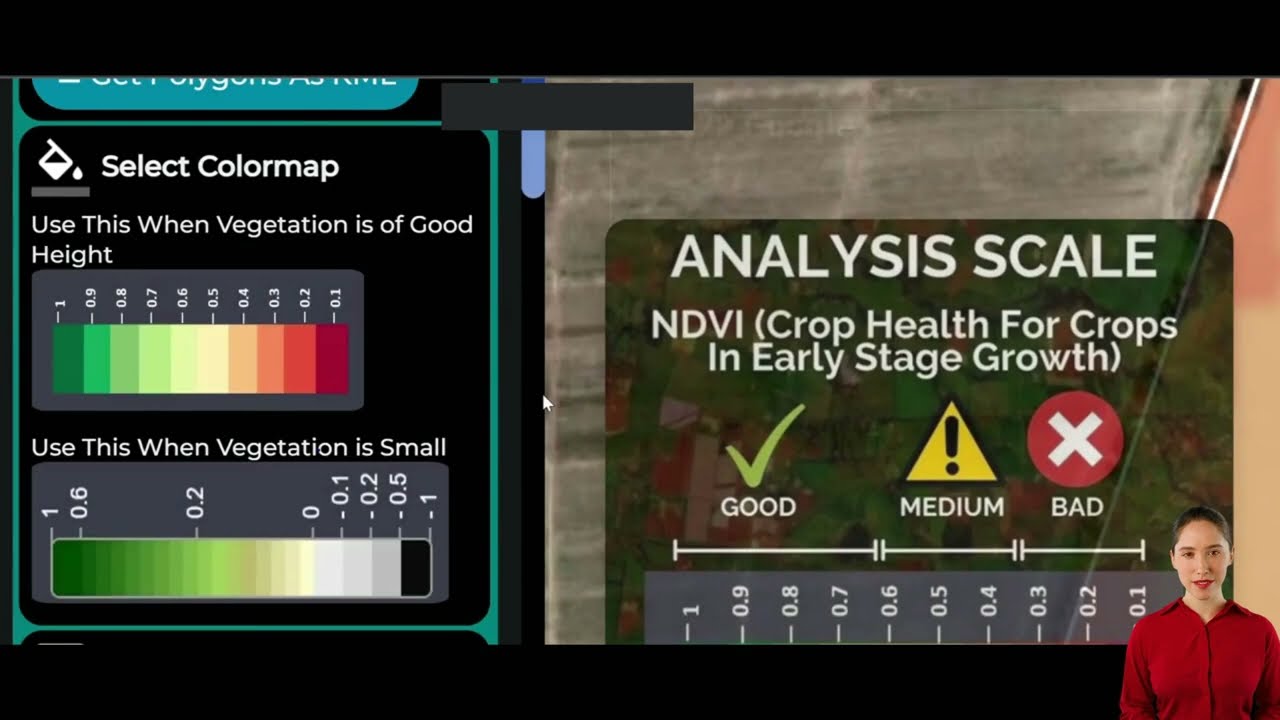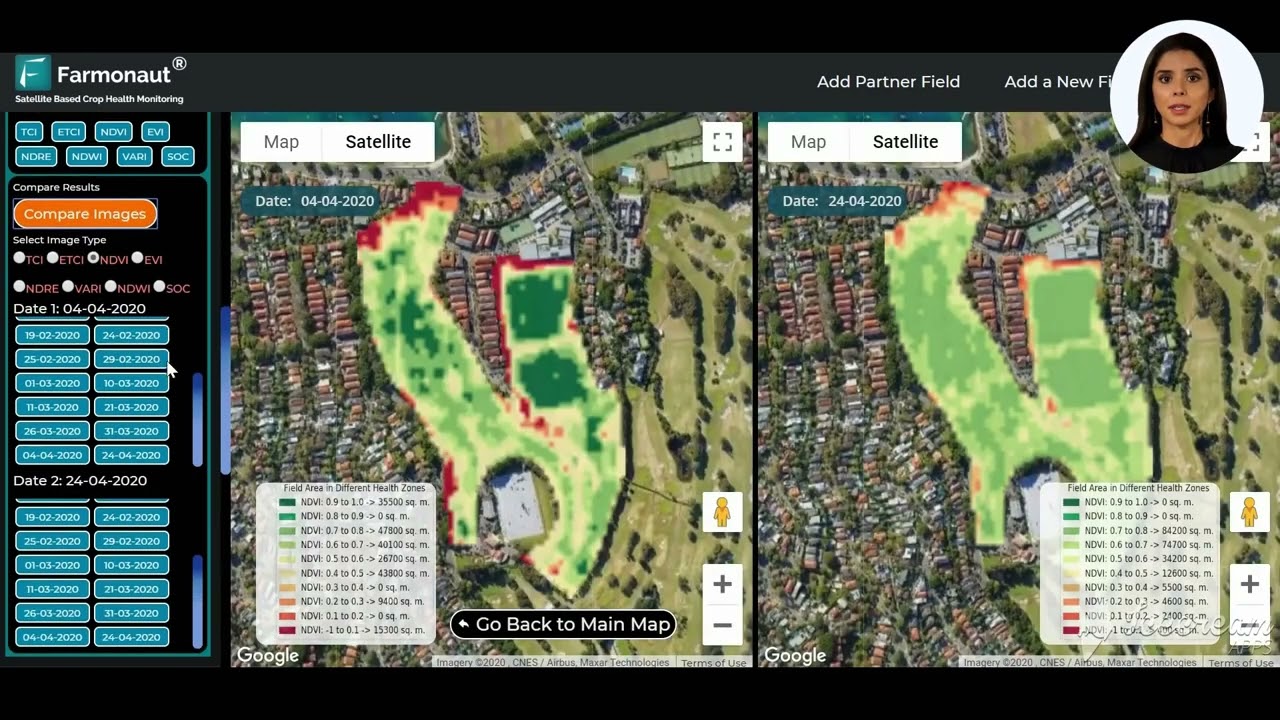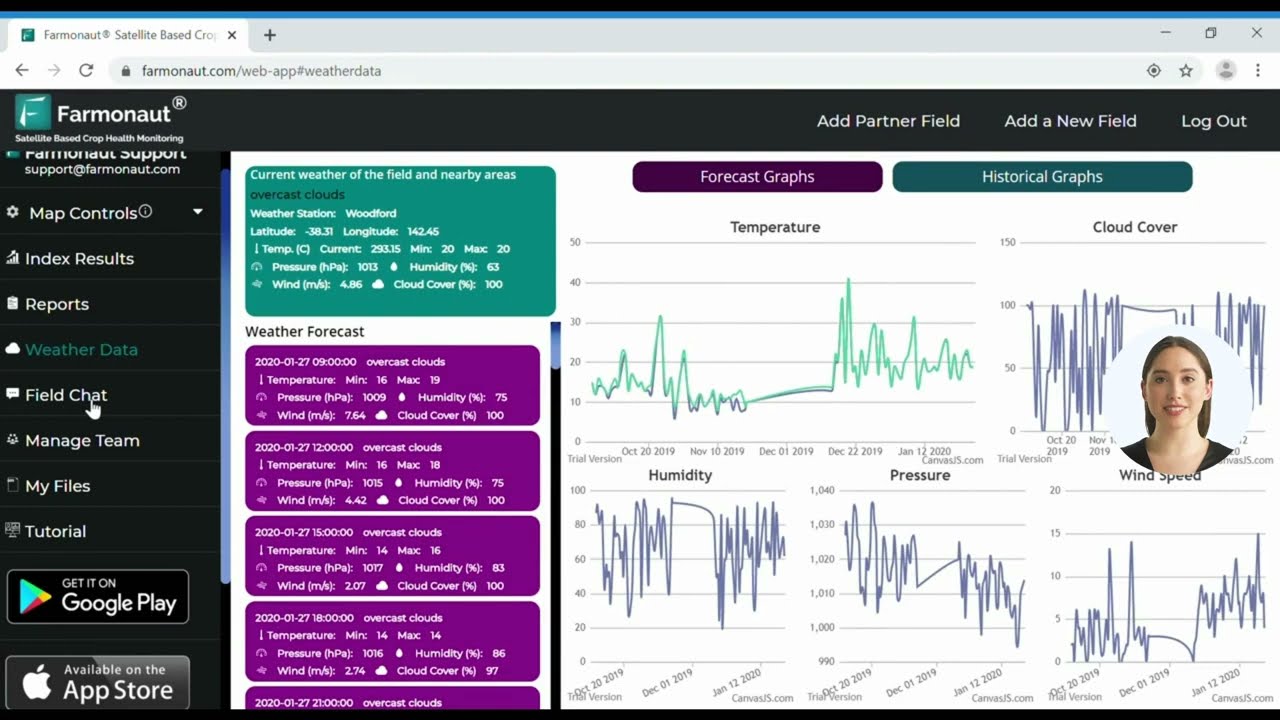Unveiling Alaska’s Gold Potential: High-Grade Soil Sampling Reveals Promising Mineral Deposits in Estelle Project
“High-grade soil sampling in Alaska’s Estelle Project revealed rock samples with gold concentrations up to 52.3 g/t Au.”
In the rugged terrain of Alaska’s Tintina Gold Belt, a new chapter in gold exploration is unfolding. We at Farmonaut, while primarily focused on agricultural technology, recognize the importance of cutting-edge exploration techniques in various fields. Today, we’re delving into the fascinating world of mineral exploration, specifically the recent breakthroughs in gold and critical minerals sampling at the Estelle Project.
The Estelle Project: A Golden Opportunity
Nova Minerals Limited (NASDAQ: NVA, ASX: NVA, FRA: QM3) has recently announced groundbreaking results from its 2024 exploration season at the Estelle Gold and Critical Minerals Project. This flagship project, spanning over 500 km² within the highly regarded Tintina Gold Belt, has yielded significant findings that underscore its potential for high-grade gold and critical minerals.
Let’s break down the key aspects of this exploration program:
- Extensive soil sampling across multiple sites
- Detailed geological mapping of the area
- Analysis of surficial mineralization
- Identification of high-grade gold and antimony deposits
These findings not only highlight the project’s potential but also demonstrate the effectiveness of advanced exploration techniques in uncovering hidden mineral wealth.
Soil Sampling Techniques: Unveiling Hidden Treasures
The exploration team employed a variety of soil sampling techniques to uncover the mineral potential of the Estelle Project. These methods included:
- Rock sampling
- Soil sampling
- Glacial till sampling
Each of these techniques plays a crucial role in building a comprehensive picture of the area’s mineral composition. Let’s explore the results from each method:
Rock Sampling: Striking Gold
The surficial sampling in the RPM regional area yielded impressive results:
- 20 out of 40 rock samples exceeded 1 g/t gold (Au)
- One sample reached a remarkable 52.3 g/t Au
These high-grade samples provide strong evidence of significant gold mineralization in the area, warranting further investigation.
Soil Sampling: Digging Deeper
Soil sampling is a fundamental technique in mineral exploration. The team collected 100 soil samples, with notable findings:
- 11 samples registered over 0.5 g/t Au
- This data helps create a map of gold distribution across the project area
Glacial Till Sampling: Nature’s Clues
Glacial till sampling provided intriguing insights:
- 34 out of 138 glacial till samples exceeded 1.0 g/t Au
- The maximum grade reached 3.6 g/t Au
- A glacial debris lobe revealed average gold grades of 1.1 g/t Au across 68 till samples
These results suggest that glacial activity has played a role in distributing gold-bearing material across the landscape, potentially indicating rich ore deposits nearby.
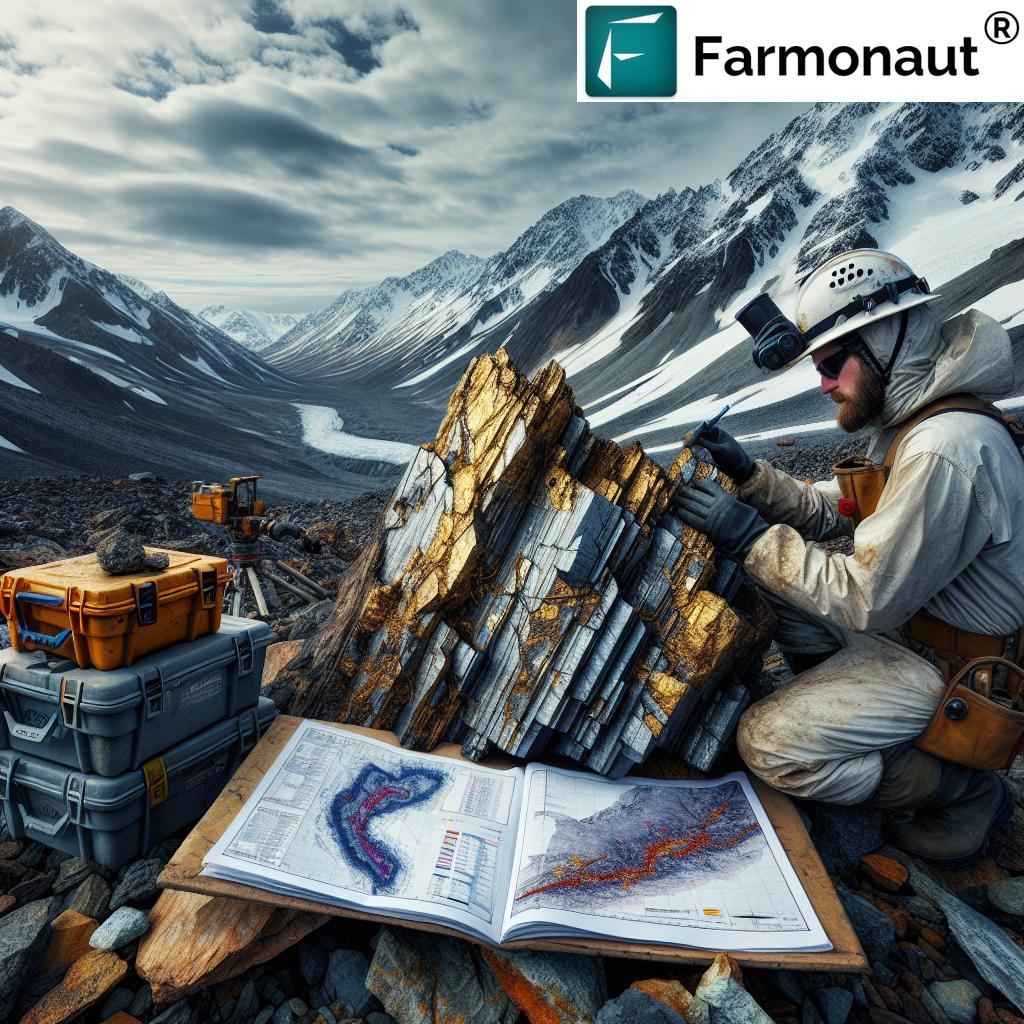
Geological Mapping: Unraveling the Earth’s Secrets
Comprehensive geological mapping of the Estelle Project area has revealed intriguing patterns of gold distribution. The team’s findings suggest that portions of the RPM deposit may be dispersed along the hillsides due to glacial erosion. This correlation between the ore deposit and gold-studded glacial till provides valuable insights for future exploration efforts.
Key observations from the geological mapping include:
- Identification of gold-bearing quartz veins
- Presence of arsenopyrite, often associated with gold mineralization
- Variations in mineralization patterns between granitic rocks and hornfels
These observations help geologists understand the structural controls on mineralization, guiding future drilling programs and resource estimation efforts.
Critical Minerals: Beyond Gold
While gold is the primary focus, the Estelle Project has also revealed promising deposits of critical minerals, particularly antimony. This dual potential for gold and antimony production adds significant value to the project.
Antimony highlights:
- The Styx prospect confirmed gold grades reaching 9.8 g/t Au, coupled with antimony concentrations of 54.1%
- The Stibium prospect exhibited an 800m by 400m rich zone in both gold (up to 141 g/t Au) and antimony
The presence of high-grade antimony alongside gold underscores the project’s potential to contribute to the supply of critical minerals essential for various industries.
Surficial Sampling: Reading the Land’s Story
Surficial sampling plays a crucial role in mineral exploration, providing valuable insights into the distribution of minerals at or near the surface. The Estelle Project’s exploration program in 2024 was a comprehensive effort, collecting:
- 511 soil samples
- 225 rock samples
- Approximately five tons of bulk material throughout the claim
This extensive sampling campaign has provided a wealth of data, allowing geologists to map out areas of high mineral potential and guide future exploration efforts.
Key Findings from Surficial Sampling
The surficial sampling program revealed several high-grade zones across the project area:
- Muddy Creek: Extended a previously known high-grade zone by 400 to 800 meters, with peak gold grades of 128.5 g/t Au
- Stibium Prospect: Exhibited an 800m by 400m rich zone in both gold and antimony
- Wombat Prospect: Uncovered gold grades peaking at 360 g/t Au, along with significant gallium concentrations
These results highlight the potential for multiple high-grade deposits within the Estelle Project area, warranting further investigation and potential resource delineation.
Innovative Exploration Methods
The success of the Estelle Project’s exploration program can be attributed to the use of innovative exploration methods. While we at Farmonaut specialize in agricultural technology, we recognize the importance of cutting-edge techniques in various fields, including mineral exploration.
Some of the advanced methods employed in this exploration program include:
- High-resolution satellite imagery analysis
- Geophysical surveys
- Advanced geochemical analysis techniques
- 3D modeling of geological structures
These methods, combined with traditional geological expertise, have allowed the exploration team to build a comprehensive understanding of the project’s mineral potential.
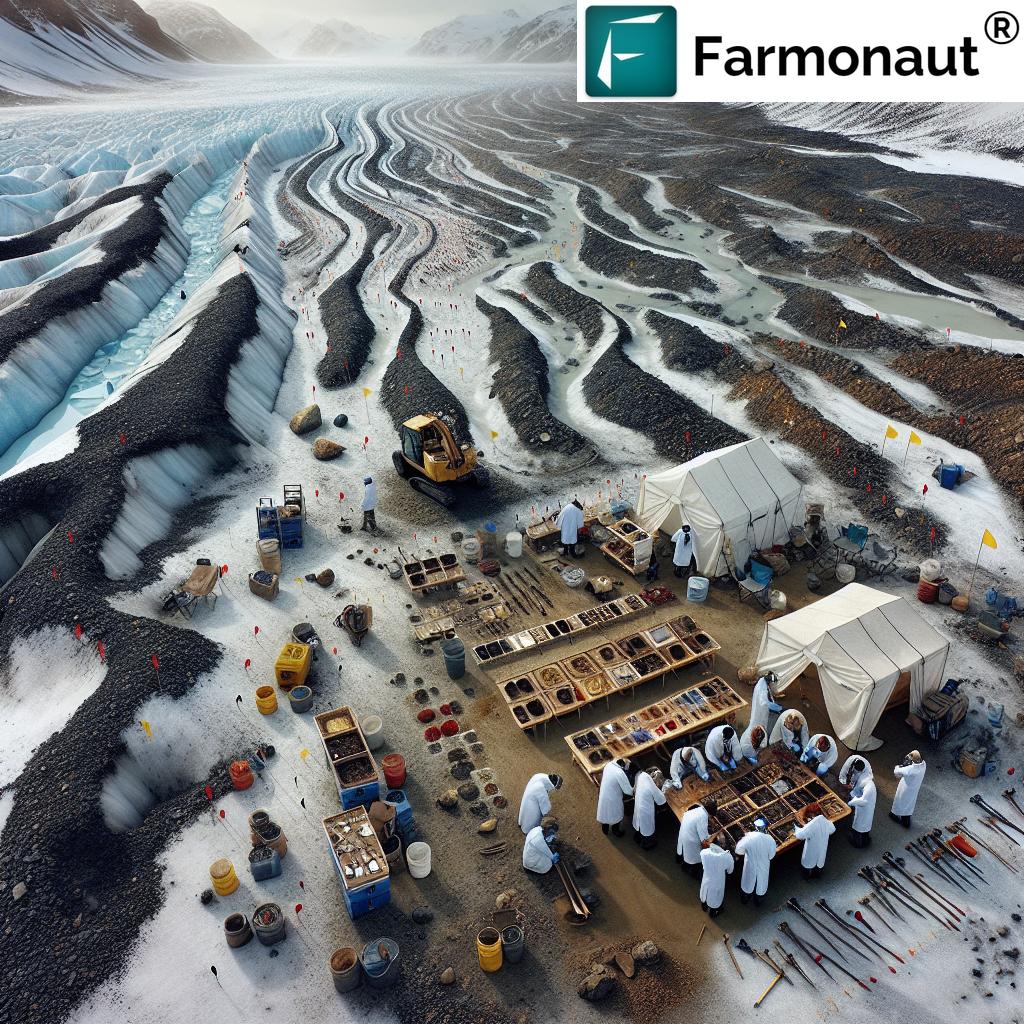
Implications for Future Mining Operations
The promising results from the Estelle Project have significant implications for future mining operations in the region. The high-grade gold and antimony deposits identified through this exploration program suggest the potential for economically viable mining operations.
Key considerations for future development include:
- Resource estimation and grade continuity studies
- Environmental impact assessments
- Infrastructure development in remote Alaskan terrain
- Processing methods for complex gold-antimony ores
As the project advances, these factors will play crucial roles in determining the feasibility and sustainability of mining operations in the area.
The Role of Technology in Mineral Exploration
While Farmonaut’s focus is on agricultural technology, we recognize the parallels between advanced farming techniques and modern mineral exploration. Both fields rely heavily on cutting-edge technology to optimize resource management and increase efficiency.
In mineral exploration, some key technological advancements include:
- Drone-based surveying and mapping
- Machine learning algorithms for data analysis
- Portable XRF devices for rapid elemental analysis
- Hyperspectral imaging for mineral identification
These technologies are revolutionizing the way geologists and exploration teams approach mineral discovery, much like how satellite imagery and AI are transforming agriculture.
Environmental Considerations in Mineral Exploration
As with any resource extraction project, environmental considerations are paramount in mineral exploration. The Estelle Project’s exploration program has been conducted with a strong focus on minimizing environmental impact and adhering to best practices in sustainable exploration.
Key environmental considerations include:
- Minimizing disturbance to local ecosystems
- Proper management of drill cuttings and waste materials
- Water quality monitoring and protection
- Rehabilitation of exploration sites
These practices ensure that the exploration program balances the need for resource discovery with environmental stewardship.
The Economic Impact of Mineral Discoveries
The potential development of the Estelle Project could have significant economic implications for the region. While it’s important to note that exploration results do not guarantee a viable mining operation, the high-grade findings suggest promising economic potential.
Possible economic impacts include:
- Job creation in remote areas of Alaska
- Increased investment in local infrastructure
- Contribution to the state’s mineral production and exports
- Development of a skilled workforce in the mining sector
As the project progresses, careful economic analysis will be crucial in determining its overall viability and potential benefits to the local and state economies.
Comparative Analysis of Soil Sampling Results
| Sample Location | Gold Content (g/t Au) | Antimony Content (%) | Other Critical Minerals | Geological Formation |
|---|---|---|---|---|
| RPM Regional Area | Up to 52.3 | Not specified | Not specified | Varied |
| Styx Prospect | 9.8 | 54.1 | Not specified | Quartz veins |
| Muddy Creek | 128.5 | Not specified | Not specified | Extended zone |
| Stibium Prospect | Up to 141 | High (not specified) | Not specified | 800m x 400m zone |
| Wombat Prospect | 360 | Not specified | Gallium | Not specified |
This table provides a clear overview of the varied mineral content across different sampling locations within the Estelle Project. The high gold grades and significant antimony concentrations highlight the project’s potential for both precious and critical minerals production.
Future Exploration Plans
The promising results from the 2024 exploration season have set the stage for future exploration activities at the Estelle Project. Nova Minerals Limited has indicated that follow-up drilling and more detailed resource delineation work will be essential next steps.
Potential future exploration activities may include:
- Targeted diamond drilling to confirm high-grade zones
- Expansion of the soil sampling grid to identify new targets
- More detailed geophysical surveys to map subsurface structures
- Metallurgical testing to optimize processing methods
These activities will be crucial in advancing the project towards potential development and production stages.
The Importance of Responsible Resource Development
As we explore the potential of projects like Estelle, it’s crucial to emphasize the importance of responsible resource development. This includes:
- Engaging with local communities and stakeholders
- Implementing best practices in environmental management
- Ensuring transparency in reporting and communication
- Investing in sustainable technologies and practices
Responsible development ensures that the benefits of mineral exploration and potential mining operations are balanced with environmental and social considerations.
Conclusion: A Golden Future for Alaska?
The results from the Estelle Project’s exploration program paint an exciting picture of Alaska’s mineral potential. The high-grade gold and antimony findings, coupled with the presence of other critical minerals, suggest that the Tintina Gold Belt may hold significant untapped resources.
As exploration continues and the project advances, it will be fascinating to see how these initial findings translate into potential resource estimates and development plans. The Estelle Project serves as a prime example of how modern exploration techniques, combined with geological expertise, can unveil hidden mineral wealth in even the most challenging environments.
While we at Farmonaut focus on agricultural technology, we recognize the parallels between our field and mineral exploration. Both require innovative approaches, advanced data analysis, and a deep understanding of the natural world. As we continue to push the boundaries of what’s possible in agriculture, we’ll be watching with interest as projects like Estelle shape the future of mineral exploration and development in Alaska and beyond.
FAQs
- What is the significance of the high-grade gold samples found at the Estelle Project?
The high-grade gold samples, with concentrations up to 52.3 g/t Au, indicate significant gold mineralization in the area. This suggests the potential for economically viable gold deposits, warranting further exploration and possible development. - Why is antimony considered a critical mineral?
Antimony is classified as a critical mineral due to its importance in various industries, including electronics, flame retardants, and batteries. Its supply is often concentrated in a few countries, making new deposits strategically important. - How does glacial till sampling help in mineral exploration?
Glacial till sampling can provide clues about mineral deposits that may be hidden beneath the surface. As glaciers move, they can transport and deposit mineral-rich material, creating a trail that leads back to the source deposit. - What are the next steps for the Estelle Project based on these exploration results?
The next steps likely include targeted drilling to confirm high-grade zones, expansion of sampling grids, detailed geophysical surveys, and potentially initial resource estimation studies. - How does environmental responsibility factor into mineral exploration projects like Estelle?
Environmental responsibility is crucial in mineral exploration. This includes minimizing disturbance to local ecosystems, proper waste management, water quality protection, and site rehabilitation. Responsible practices ensure exploration activities balance resource discovery with environmental stewardship.
“The exploration program in Alaska’s Tintina Gold Belt uncovered promising deposits of both gold and critical minerals like antimony.”
While Farmonaut specializes in agricultural technology, we recognize the importance of innovative exploration techniques across various fields. If you’re interested in learning more about how advanced technology can revolutionize land management and resource optimization, we invite you to explore our services:
For developers interested in integrating satellite and weather data into their own systems, check out our API and API Developer Docs.
Earn With Farmonaut: Affiliate Program
Earn 20% recurring commission with Farmonaut’s affiliate program by sharing your promo code and helping farmers save 10%. Onboard 10 Elite farmers monthly to earn a minimum of $148,000 annually—start now and grow your income!



